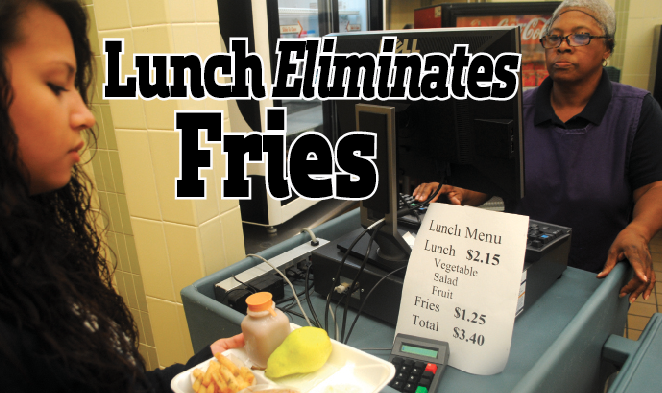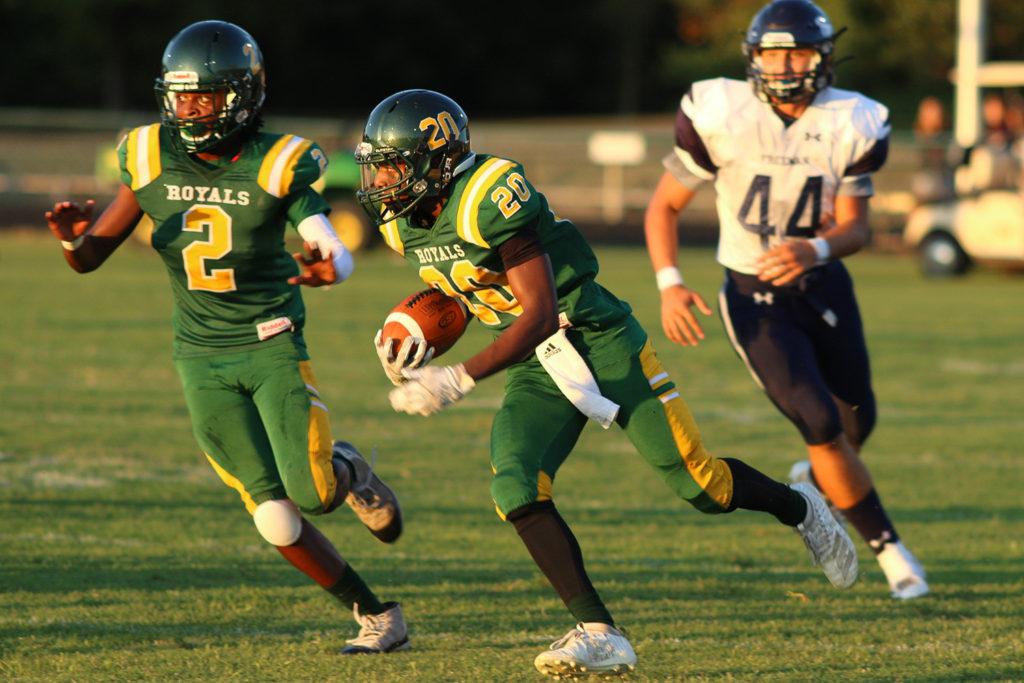By Korrina Smith
At the start of the school year, some students were confused about the new lunch menu and prices because there have been many changes starting with the addition of daily fruits and vegetables.

“You have to take a fruit or a vegetable with each meal in order to make it a reimbursable meal,” Cafeteria Director Tom Guisto said.
The cafeteria has to have both fresh vegetables and canned vegetables, with different colored vegetables every week.
“I think we should be able to choose what we want,” senior Brandon Hilliard said.
A bill was passed in November of 2011 that required the USDA to consider the tomato paste on pizza to be a vegetable, which means it counts as the student’s serving of vegetables for that given day.
There are also new restrictions concerning which drink a student can get, based off of which fruits and vegetables they have chosen to eat that day.
If a student gets two fruits with the meal, the student cannot get a fruit juice because that would constitute as three fruits.
“There are more changes involved,” Guisto said. “A lunch can consist of no more than 850 calories.”
For some students, only eating 850 calories is not enough to completely rid their hunger.
“I think it’s a good thing, but it is not enough to fill someone up,” senior Alexes Riggins said.
Another major change involved in the lunch menu is that there is no salt in any of the foods.
“Everything is just so labor intensive,” Guisto said. “Of course to eat healthy you spend more, so we do not know how that will affect our bottom line yet.”
In the past, fries have been a daily part of the lunch menu and were included in the total cost of lunch. However the french-fry policy has changed this year.
“The biggest change for the students to get used to is that there are no fries on the menu every day,” Guisto said. “If they want fries, they have to pay for it on the two a la carte aisles, which is $1.25.”
These changes were promoted by First Lady Michelle Obama and the Agriculture Secretary Tom Vilsack, and are projected to affect more than 32 million students.
“I think these changes are over the top,” sophomore Katelyn Keyser said. “I think we can deal with it ourselves and it should not be a national thing.”
Some students have mixed feelings about these changes.
“I do not think you should have to pay more for fries,” junior Jahneshia Govans said. “You should be able to get vegetables or get fries.”
Other students feel that the lunches this year do not compare to those of last year.
“It is not as good as it was last year,” Keyser said. “It had a bigger variety last year and it was better tasting.”
With approximately 30% of children and teens in America being overweight, some students may view the changes in the lunch menus to be a step in the direction toward a nation of healthier students.
“I just feel like the school is trying to be healthier, that’s it,” senior Brandon Hilliard said.



































